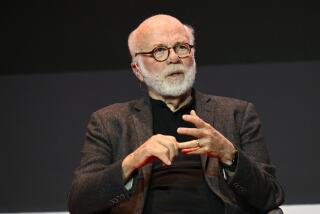Ford Paying the Price for Earlier Faintheartedness
- Share via
Donald Petersen, who is taking early retirement as chairman of Ford Motor Co., told a friend recently that he feels he is leaving Ford in good shape, but that he is worried on one point: Ford--and other U.S. car companies--trail Japanese car makers in engine technology and will have to work hard to close the gap.
Petersen is being clear-eyed on both counts. Ford is sound today, profitable and well financed, but it faces a challenge in engines.
And the story behind that challenge--and even Petersen’s retirement at 63, say some analysts--illustrates just how tough and daunting the global car business is these days. Also, at a time when Lee Iacocca, the outspoken chairman of Chrysler is touring the country decrying “a national inferiority complex,” the Ford story offers a glimpse into the reasons behind that complex: Many Americans suspect that their best and brightest firms have lost the will to compete.
Ford was the success of the 1980s, a venerable company that woke up to find itself facing the specter of bankruptcy in 1980--when it lost $1.5 billion--but which recovered its old skills and finished the decade with profit and stature. Ford earned $3.8 billion last year on $96 billion in sales--almost three times its sales in 1980.
Ford was the auto industry’s style setter with the aerodynamic Taurus and similar cars, and it leads in more than style. The company rejiggered factories and labor relations in the 1980s and has become the low-cost producer among U.S. auto makers. “Some of Ford’s plants are the equal of anything in Japan,” says analyst Maryann Keller, of Furman Selz Mager Dietz & Birney . Ford, in short, met the challenge of reducing manufacturing costs while bringing out eye-catching cars.
Yet Petersen is right to worry. Because these days a company no sooner meets one challenge than another pops up. Ford will have to spend more than $3 billion a year for the next five years on new engines that offer more power in smaller or lighter cars, and could lower fuel emissions in all cars.
Japanese car makers are already proficient in such multivalve engines, and Ford acknowledges that that could be important. The engines will give car makers more flexibility in meeting the tougher fuel-efficiency and emissions standards anticipated in the ‘90s, explains John Huston, Ford’s chief power-train engineer. That’s why the company is pressing ahead and hopes to have a variety of such engines, along with advanced electronic transmissions, in its cars by the 1992 and ’93 model years.
The question arises: If the engines are important, why didn’t Ford have them sooner? Did it lack technology? Or money?
The answer is money--but due more to a lack of confidence and unwillingness to invest than to a lack of dollars. The early 1980s brush with financial disaster frightened the Ford family, which controls 40% of the stock. So when the crisis passed and profits grew in the mid-1980s, Ford used some of them to buy into other businesses. Ford wanted an anchor against the uncertainties of the automotive industry, which included the prospect of a U.S. market crowded with foreign cars, both imported and U.S.-made.
In financial services, Ford bought First Nationwide and other savings and loan companies, and later spent $3 billion to acquire the Associates, a commercial credit firm. “Detroit thinks of finance as secure,” explains analyst Keller, “because even in poor years for car sales, the credit companies--Ford Credit, GMAC, Chrysler Credit--were always profitable.”
Beyond finance, the car companies veered into aerospace, seeking technology as well as supposedly steady military business. Ford bid on Hughes Aircraft, which General Motors eventually acquired, and considered buying Lockheed. Chrysler bought Gulfstream Aerospace.
But caution has a price. Because they spent on diversification instead of engines, Ford lacks new products now, says analyst Arthur Davis of Prescott Ball & Turben, and has to watch while competitors come out with new models.
And the lack of new, powerful engines may also have hurt Ford’s program to renovate its Thunderbird and Mercury Cougar cars. The renovated models initially were overweight and underpowered, say analysts, and that difficulty may have led to Chairman Petersen’s early retirement.
So, big consequences resulted from a spell of faintheartedness. However, it’s not a permanent disability. Ford has lately reawakened to the competitive threat and is selling diversified subsidiaries--Ford Aerospace and New Holland farm machinery--to raise cash for the automobile business. It will push ahead with its own engine development and, meanwhile, procure engines for several of its cars from Japanese companies, including its joint venture partner Mazda. Ford remains one of the best and brightest U.S. companies, and a probable winner in the new decade as it was in the last.
But Americans might ask themselves why it is that Japanese car makers are the ones with the engines.
The answer, of course, is simple and obvious: They looked ahead, saw a need for lighter, yet powerful cars and invested in developing engines that would make such cars possible. They invested in their business, in other words. When U.S. companies get back to doing the same, competitiveness and American self-confidence will return.






